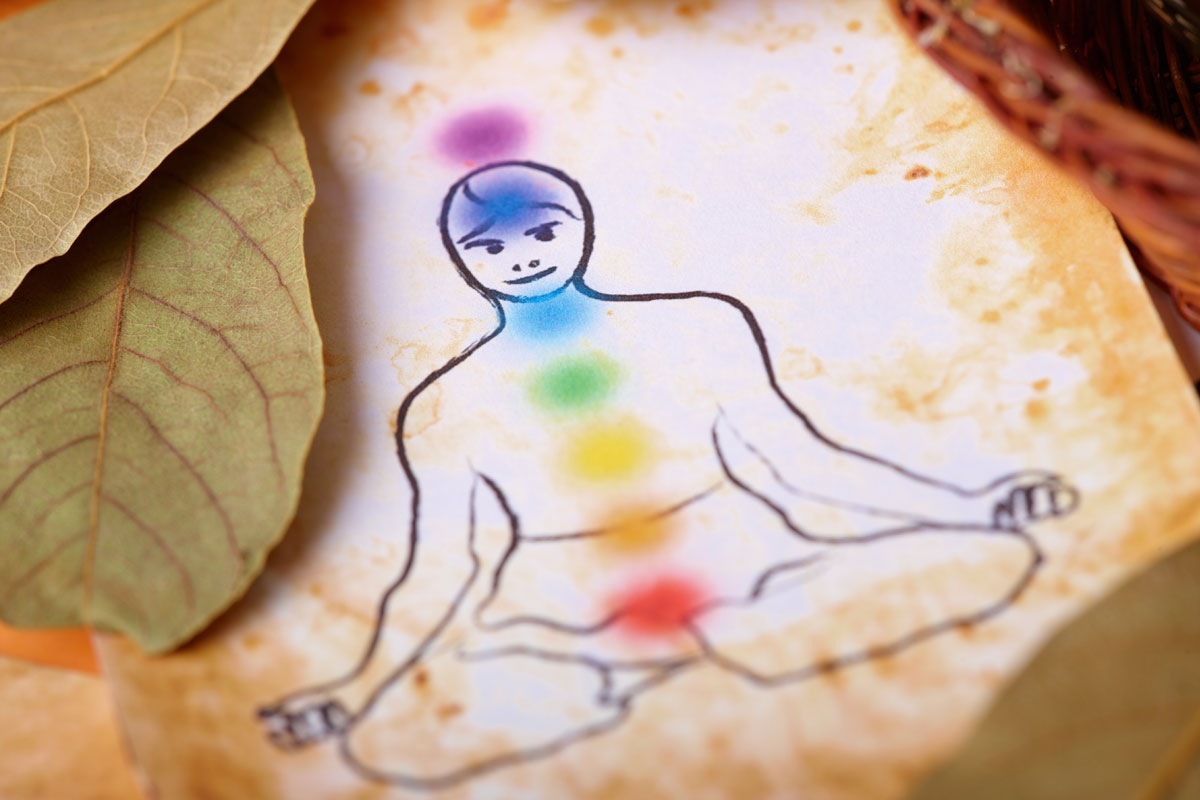If you’ve ever done yoga, embarked upon wellness travel or visited a luxurious health spa, you have undoubtedly heard about “chakras,” the 7 major energetic centers in our body through which all prana (energy) flows. What you may not know, however, is the story behind these spiritual centers of power and the importance of keeping them in balance.
Chakras, a Sanskrit word meaning wheel or disk, is used to define the differing points along the spine where energy builds up in a variety of massive nerve centers. Considered by many to be the source of our psychological, emotional and spiritual self, these chakras help to regulate the systems of the human body, including everything from organ function to your complex myriad of emotions. Many modern day practices aim to open your chakras, returning them to their natural balance, so that a harmonious flow of energy can be restored.
There are seven major chakras, each serving a very specific function and represented by a different color and even sound. Take a look below at each of the chakras in turn.
The Root Chakra
Sanskrit name: Muladhara
Color: Red
Sound: LAM
Lying at the base of your spine is the first chakra known as the Root Chakra or Muladhara. This ever important source of energy is responsible for feelings of safety, security and survival. It helps with life’s most basic needs, including food, shelter, sleep and self preservation. Much like the base of your spine, the Root Chakra is the foundation for everything we do in our lives and controls how we react to fear and attachments.
The Sacral Chakra
Sanskrit name: Svadhisthana
Color: Orange
Sound: VAM
The second chakra, the Sacral or Svadhisthana, represents the emotional, sensual and creative aspect of our body. Much like the water that it represents, it is flexible and flows without limit. Directly connected to our desires for pleasure, this chakra is located just below the navel and often thought to be situated in the genitals, a great source of human pleasure. Extremely active in our sexuality, the Sacral Chakra is a driving force in the enjoyment we experience in life and represents our creativity in all aspects.
The Solar Plexus Chakra
Sanskrit name: Manipura
Color: Yellow
Sound: RAM
Characterized by fire and heat, the Solar Plexus Chakra or Manipura is related to strength and intellect. It has as much to do with one’s mental abilities as their sense of personal responsibility. This third chakra, situated in between the navel and chest, is directly connected to the sun and energy of light, a vital source of life on earth giving us the power to achieve our goals in life.
The Heart Chakra
Sanskrit name: Anahata
Color: Green
Sound: YAM
The next chakra is the Heart Chakra or Anahata, an expression of love, compassion and connection. This chakra acts as a bridge between the spiritual higher chakras and the earthly chakras 1 to 3, creating a link between each. Often associated with air, the heart chakra is related to the act of breathing and the movements it entails. Located at the center of the chest, this energy source is responsible for the lungs and cardiac system, as well as the thymus, an element that aids in the regulation of the immune system. In addition, the Heart Chakra is responsible for our capacity to love, feel compassion, grieve, and forgive among many other psychological and behavioral characteristics.
The Throat Chakra
Sanskrit name: Vishuddha
Color: Blue
Sound: HAM
Located at the center of the neck, the fifth chakra or Vishuddha is the gateway for energy that passes from the lower parts of the body to the head. In relation to its location, the Throat Chakra is responsible for forms of communication, expression and sound. It enables us to express ourselves, both verbally and non-verbally, externally and internally. It also aids in our ability to realize our purpose in life and connect with our spiritual and intuitive abilities.
The Third Eye Chakra
Sanskrit name: Ajna
Color: Indigo
Sound: SHAM
Associated with vision, intuition and perception, the Third Eye Chakra or Ajna is a supreme element, that combines all the other elements in their pure form. Most commonly believed to be located between the eyebrows, this superior chakra allows us to find insight, inspiration and creativity in the world and is associated with the pituitary and pineal glands. The Third Eye Chakra serves to provide openness, imagination and intuition in one’s life.
The Crown Chakra
Sanskrit name: Sahaswara
Color: Indigo
Sound: OM
The seventh chakra or Sahaswara, located on the top of the head, provides the consciousness we need to understand the world. Closely related to the brain and the nervous system, this final chakra aids in our awareness, wisdom and presence. When it is out of balance, a disconnection with one’s spirit and close-mindedness can result. On the other hand however, when one is immersed in the energy of the crown chakra, a state of bliss and harmony supersedes everything else.















